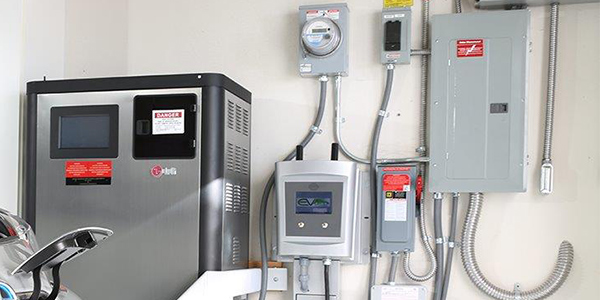The California Public Utilities Commission acted to correct a “serious omission” Thursday that it said had resulted in huge sums of money going to owners of rural homes, regardless of income, to provide battery backup for electric well pumps.
The commission voted 4-1 to limit its Self-Generation Incentive Program’s (SGIP) “equity resiliency” grants to those with 80% of an area’s median income. The changes will take effect retroactively to Aug. 17, when Commissioner Clifford Rechtschaffen issued a scoping memorandum indicating the CPUC was considering altering program criteria. (See PSPS Relief Funds Not Spent as Intended, CPUC Says.)
The SGIP funds were meant to help low-income and medically vulnerable residents of areas affected by public safety power shutoffs (PSPS), the intentional blackouts that utilities use to prevent their equipment from starting wildfires.
Other components of the equity resiliency budget had income restrictions but not the well pump grants. The result was that purveyors of battery storage targeted wealthier homeowners, including those with vacation homes.
Rechtschaffen said the CPUC quickly added the equity resiliency component to SGIP last year to help those facing hardships from multiple power shutoffs, including residents who rely on well water. But the program has been overwhelmed, he said.
Nearly $400 million of the $612 million meant to last through 2024 was spent in less than a year, the commission said. PG&E received 10,000 applications for the program’s subsidies this year, more than it received in the first 18 years of the SGIP program, and committed all of its $270 million share of the equity resiliency proceeds, Rechtschaffen said.
The program is funded by $166 million per year in ratepayer charges.
“In hindsight, given this surge of applications by well customers, it would have been better to limit the program to low-income customers from the outset,” Rechtschaffen said. “We are making that adjustment now.”
Half the equity resiliency grant recipients are well customers, he said.
Rechtschaffen laid part of the blame on companies that sell energy storage systems.
“I think it’s somewhat unfortunate that the developers have focused so much of their attention on signing up well customers … as opposed to focusing on medical baseline or low-income residential customers,” Rechtschaffen said. “Those customers face the greatest need. They suffer the most from power shutoffs.”
He noted that developers had opposed changes that would affect already-filed applications.
In a written statement, the California Solar and Storage Association, said, “CALSSA strongly objects to retroactive changes to customer programs, which undermine customers’ faith in California’s distributed energy programs.
“Storage developers, including many small businesses across the state, invested thousands of dollars and countless staff hours identifying eligible customers, designing projects, and learning SGIP’s complex application process for projects that complied with the program’s rules at the time and that will now be rescinded.”
The CPUC approved $830 million for the SGIP in January, with $612 million dedicated to “equity” and “equity resiliency” subsidies to aid residents who face repeated PSPS. Thousands of the program’s targeted customers rely on electrically powered medical equipment to keep themselves alive. (See California PUC Devoting $1.2B to Self-generation.)
Commissioner Martha Guzman Aceves cast the lone “no” vote in Thursday’s voting meeting, saying the remaining funds in the program should be given first to customers who rely on electrically powered medical devices.
Rechtschaffen said he sympathized but didn’t think he had the votes among the five commissioners to make that change.
Customers who filed grant applications but had not yet received funding will have to meet the new criteria.
Commissioner Liane Randolph repeated her misgivings about applying new rules to pending applications but voted for the changes.
“I was very concerned about … modifying the rules in the middle of the process,” Randolph said. “I still have that concern, but I recognize there are countervailing issues with regard to the large amount of funds that would otherwise not be available for other aspects of the program.”
In a meeting Oct. 12, Commissioner Genevieve Shiroma called the situation a “serious omission” but one she thought shouldn’t be fixed by changing the rules midstream. Shiroma voted for the changes Thursday.
CPUC President Marybel Batjer, who also voted “yes,” thanked Rechtschaffen and staff members for “making this difficult situation as right as can be.”
She said she was frustrated by the lack of data showing “this was an abused situation by people who … are using the program for a second home.” The CPUC asked for the data from utilities but had not received it yet, she said.



